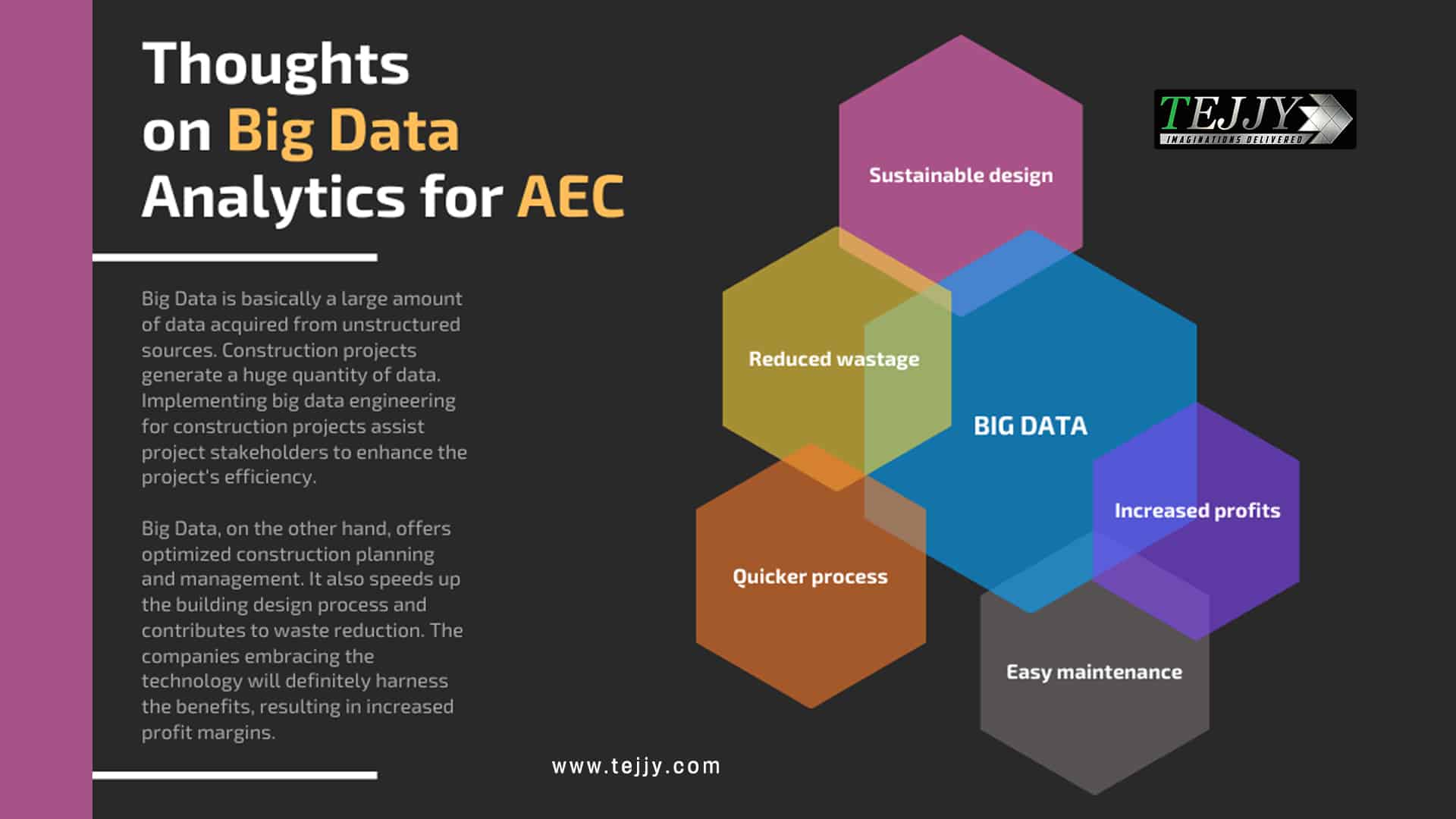
The construction business has tons of project-related data. Due to a large quantity of data, it sometimes gets difficult to find out the relevant information, when required. The construction project data is usually stored in computers in various formats like PDFs, videos, sheets and docs. There are also physical files including plans, drawings, estimates, tenders, bills, etc.
The Architecture, Engineering and Construction industry is a data-intensive industry. The construction sector alone produces tons of data every day. Since the construction began, it has been producing a large quantity of data in the form of papers, files, drawings, blueprints and estimates. The set of information in the physical format acquired a large amount of space. So, practically it was too difficult to handle and keep records of the documentation.
According to an AutoDesk blog post, big data may help construction companies become more flexible, efficient, and safe, motivating more teams to adopt it. Here’s a closer look at the benefits that are driving the use of big data in building.
The construction industry has started to discover the wonderous benefits of big data.
What is BIG DATA?
Big data is basically a large quantity of data stored in a single source, using which the professionals could carry out further processes as & when required. Big data collects the data and is analyzed in order to use it as information. Big data engineering enables a systematic and precise analysis of the acquired data, from unstructured sources such as cell phones, cameras, sensor equipment, and log files as well. Incorporating digital technologies and tools such as big data, data-intensive industries can benefit a lot from it. Let us see how Big Data is useful for Architecture, Engineering & Construction industries and how they can harness its benefits.
Big Data for AEC
The AEC business is one of the key players in maintaining the economic growth of many countries. The data-wealthy industry acquires a large volume of data in physical and digital formats from various unstructured sources. The unstructured data is either thrown away or remains unused, resulting in inefficient projects.
According to BDO Global, in 2017, 98% of the construction megaproject data was either thrown away or was even not collected. This led the companies to cost overrun, unoptimized project schedules, and wastage of resources. Using big data analytics for construction projects offers several benefits to the stakeholders involved. Precise cost estimates, structured project workflows, and optimum use of resources are some of the major benefits of big data engineering in construction.
How Is Big Data Used in Construction?
Considering the design-build-operate model, big data analytics is beneficial in almost all phases of construction projects. The processed and accurate information related to the building design, estimates, workflows, etc. is used from the pre construction stage of the project to the handover. Let us discuss how the construction project stakeholders could harness the benefits of the technology in each phase of a construction project.
🏗️ Construction Planning and Estimation
Planning is one of the most important and earliest steps in construction projects. It includes planning of finance, project schedules, materials, machines, manpower, and other components included in the construction process. Implementing big data technology in construction planning helps engineers and architects with compiled data of current and previous projects. The data allows planners to identify the potential risks in the planning stage, eliminating cost overruns, project delays, and wastage of resources.
Data analytics also represents the active time and the idle time through smart sensors and artificial intelligence. It enables the planning department in better decisions making for resources, whether to buy or lease. It also allows engineers to plan
🏗️ Building Design and Modeling
Big data analytics and technology can be useful for construction design building information modeling (BIM) and artificial intelligence . It helps engineers and architects to determine an optimal design for the project, benefitting the stakeholders as well as the house owners. The fetched data is also utilized to determine probable risks in the design of the building. The structured data provides the best alternatives for a sustainable design of the structure.
🏗️ Building Construction
During construction, it is vital to follow the planned process. Construction planning using big data allows engineers and supervisors hassle-free execution of various construction processes. It is easy to collaborate and coordinate with team members through state-of-the-art technologies implemented with big data. In any case, if the construction activities or any components of the project deviate from the planned path, the sensors give an alert to the project team.
🏗️ Maintenance & Facility Management
The last phase of the construction process is restoration and maintenance. It usually occurs after the construction ends. During the construction process, the information is collected and stored for future use. The maintenance team can utilize the building information to carry out the maintenance and renovation process of the structure.
Construction Data Analytics: Stats and Trends

Companies that utilized big data analytics reported an 8% increase in revenue. (Source – BARC)
Big data is at the forefront of construction industry innovation, and its popularity will only grow as the construction process gets more digital. The following are some of the most important big data technology statistics and trends:
- In 2021, the big data market is anticipated to be worth $99.31 billion. (Forbes)
- By 69 percent, big data improves a company’s chances of making better strategic decisions. (BARC)
- Companies who used big data analytics reported an increase in revenue of 8%. (BARC)
- 14 percent of construction firms seek to expand their use of internet analytics. (Sage)
- Construction companies require reliable financial and project data in 57% of cases. (Sage)
- 97.2 percent of businesses are investing in big data and artificial intelligence. (NewVantage)
Top 8 Benefits of Big Data Analytics in Construction
Construction firms that use big data report increased productivity, efficiency, and overall project costs. The following are some of the advantages of big data analytics in construction:
1. Saving Cost for Construction Project
2. Boosting Productivity of AEC Industry
3. Optimizing Price for Building System
4. Competing with Large Business Enterprises
5. Focusing on Local Preference
6. Enhancing Sales & Tap New Markets
7. Building Loyalty with Stakeholders & Clients
8. Hiring Competent Resources to Eliminate Potential Risks

Wrapping-up
Incorporating big data engineering in architecture and construction, the civil engineering business can harness a bagful of benefits. There are great opportunities for architects, designers, engineers, planners and contractors in all the areas of construction by implementing big data. The construction professionals are able to work productively, resulting in efficient outputs. From the design stage to the maintenance, big data has a solution for every problem, as it is capable of completely optimizing the construction project.









